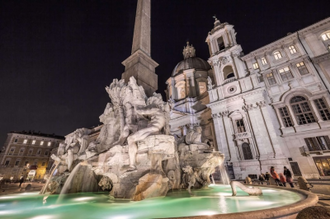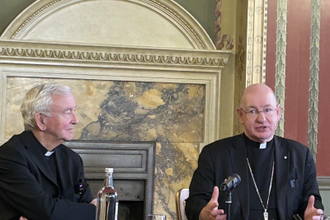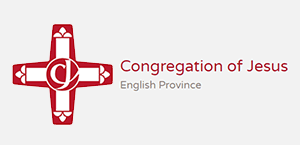Gospel in Art: Happy New Year. The Jubilee Year of Hope, 2025

Fontana dei Quattro Fiumi (Fountain of the Four Rivers), Designed and sculpted by Gian Lorenzo Bernini, Commissioned in 1648 for the 1650 jubilee year, Piazza Navona, Rome © Alamy
Source: Christian Art
Gospel of 1 January 2025
Luke 2:16-21
At that time: The shepherds went with haste and found Mary and Joseph, and the baby lying in a manger. And when they saw it, they made known the saying that had been told them concerning this child. And all who heard it wondered at what the shepherds told them. But Mary treasured up all these things, pondering them in her heart. And the shepherds returned, glorifying and praising God for all they had heard and seen, as it had been told them.
And at the end of eight days, when he was circumcised, he was called Jesus, the name given by the angel before he was conceived in the womb.
Reflection on the Public Fountain
Happy New Year to you all! This year is no ordinary year in the life of the Church - it is a Jubilee Year. The Holy Father has proclaimed 2025 as a Jubilee Year, with the theme "Pilgrims of Hope." The practice of Jubilee Years already began in 1300, when Pope Boniface VIII invited the faithful to Rome for a time of pilgrimage, penance, and renewal, granting special indulgences. Since then, Jubilee Years, taking place every 25 years, have become significant moments in the Church's spiritual life.
Jubilee Years in the Catholic Church have often inspired extraordinary contributions to the arts, serving as a catalyst for architectural, artistic, and cultural achievements. Several Jubilee Years stand out as particularly significant for the arts. During Pope Alexander VI's pontificate, the Jubilee year of 1500 coincided with the height of the Renaissance. Various masterpieces were commissioned from Michelangelo and Raphael, contributing to the splendour of Rome as the centre of Christian culture, and embellishing the city to welcome the Jubilee pilgrims. The Mystical Nativity by Sandro Botticelli is also thought to have been specifically commissioned for the Jubilee year. In the Jubilee Year of 1650, Pope Innocent X commissioned Bernini's Fountain of the Four Rivers in Piazza Navona.
To me, this is probably the most well know artwork directly as a legacy of the Jubilee years over the centuries. Bernini's Fountain of the Four Rivers (Fontana dei Quattro Fiumi) in Piazza Navona, Rome, is a Baroque masterpiece. Pope Innocent X commissioned it in 1648 to be ready for the Jubilee Year of 1650. The fountain showcases Bernini's exceptional talent for combining architecture, sculpture, and storytelling into a dynamic work of art. At its centre is an ancient Egyptian obelisk (brought to Rome by the Emperor Caracalla), symbolising the Church's triumph over paganism, surrounded by four monumental river gods representing the great rivers of the four continents known at the time: the Nile (Africa), the Ganges (Asia), the Danube (Europe), and the Río de la Plata (Americas). Each figure is adorned with flora and fauna symbolic of their respective regions, creating a visual celebration of the Church's global reach. The fountain's water flows around rugged rock formations, contrasting with the smooth skin of the river gods.
LINKS
Gospel in Art: https://christian.art/
Today's Reflection: https://christian.art/daily-gospel-reading/luke-2-16-21-2025/


















